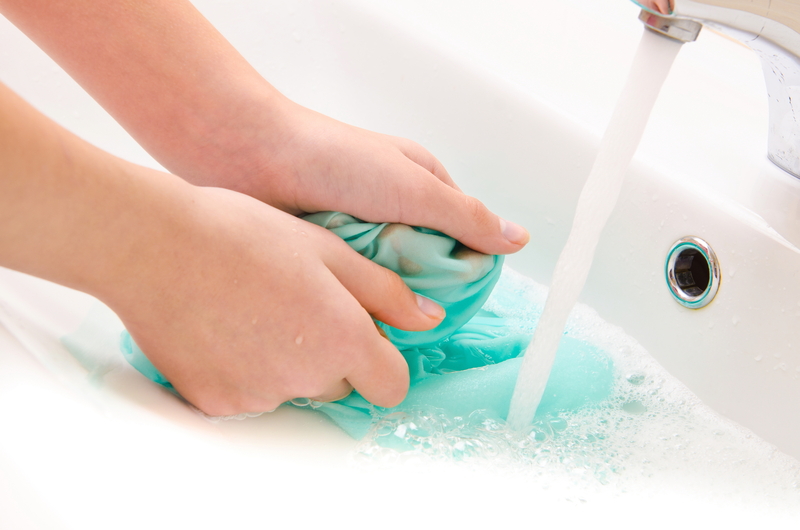Refresh your surroundings by tackling damp odors
Posted on 11/06/2025
Refresh Your Surroundings by Tackling Damp Odors: A Comprehensive Guide
Damp odors can invade our homes, offices, and personal spaces, causing discomfort and raising concerns about indoor air quality. Refreshing your surroundings by addressing and eliminating these damp smells not only improves your living environment but also contributes to better health and well-being.
In this article, we will explore effective strategies to combat musty smells, prevent future occurrences, and transform your spaces into fresh, invigorating sanctuaries. Through proven tips and insights, you'll be equipped to remove damp odors and maintain a healthy, pleasant ambiance.

Understanding the Causes of Damp Odors
Before delving into solutions, it's crucial to identify what causes these unpleasant scents. Damp odors often have a distinct, musty aroma reminiscent of mold or mildew. This section covers why they occur and why it's important to address them promptly.
Common Sources of Musty Odors
- Mold and Mildew Growth: One of the primary culprits behind persistent damp smells. These fungi flourish in moist, poorly ventilated areas.
- Water Leaks: Leaky roofs, pipes, or plumbing fixtures allow moisture to accumulate, creating ideal conditions for odors to develop.
- Poor Ventilation: Insufficient airflow allows excess moisture to linger, promoting a stale atmosphere and enabling odor formation.
- Absorbent Materials: Carpets, fabric upholstery, and wallpaper can trap moisture and release unwanted scents.
Addressing the root cause not only eliminates the immediate problem but also prevents the recurrence of dampness-related odors in the future.
The Dangers of Ignoring Damp Odors
Many consider musty odors an annoyance, but persistent dampness can indicate underlying issues that affect health and structural integrity.
- Health Risks: Prolonged exposure to mold and mildew spores can cause respiratory problems, allergies, and worsen asthma symptoms.
- Structural Damage: Excess moisture weakens building materials over time, leading to costly repairs.
- Decreased Indoor Air Quality: Stale air full of irritants can make indoor environments unpleasant and unhealthy.
Refreshing your home or workspace by tackling these odors means creating a safer, healthier environment for everyone.
Effective Strategies to Eliminate Damp Odors
Ready to refresh your surroundings and banish mustiness for good? Follow these comprehensive steps to efficiently tackle damp odors.
1. Identify Sources of Moisture
- Inspect your home for leaks, damp spots, and areas with poor ventilation.
- Check basements, bathrooms, kitchens, and attics, as these are common problem areas.
- Look for visible mold, discolored patches, or water stains on walls and ceilings.
Detecting moisture early allows for targeted action and minimizes damage.
2. Improve Air Circulation
- Open windows and doors regularly to let fresh air in.
- Use exhaust fans in bathrooms and kitchens to reduce humidity.
- Consider ceiling or portable fans to boost airflow throughout your home.
Enhanced ventilation effectively disperses trapped moisture and dissipates odors.
3. Dehumidify Your Space
- Invest in a reliable dehumidifier to extract excess water from the air.
- Monitor humidity levels with a hygrometer; ideally, keep indoor humidity below 60%.
- For small spaces, silica gel packs or moisture absorbers work well.
By controlling humidity, you prevent musty odors and the growth of mold and mildew.
4. Clean and Dry Affected Areas Thoroughly
- Shampoo carpets and vacuum upholstery using equipment designed for moisture extraction.
- Wash curtains, bedding, and removable fabrics frequently.
- Scrub hard surfaces with a solution of vinegar and water or a commercial cleaner designed to eliminate mold and bacteria.
Regular and thorough cleaning keeps musty odors at bay and ensures your home stays inviting.
5. Address Leaks Immediately
- Seal leaky roofs, windows, and pipes as soon as possible.
- Contact a professional if you suspect hidden plumbing issues.
- Make sure gutters and downspouts channel water away from your foundation.
Proactive maintenance is essential for permanently removing damp smells.
6. Use Natural Odor Absorbers
- Baking soda: Place bowls around musty rooms and inside closets to absorb and neutralize odors.
- Charcoal briquettes: These act as effective deodorizers--leave a few in a bowl for days at a time.
- White vinegar: Fill a spray bottle and use it to treat musty carpets, walls, or fabrics.
- Essential oils: Lavender, tea tree, or eucalyptus oil not only mask odors but can also inhibit fungal growth.
Natural options are cost-effective, safe, and eco-friendly, making them ideal for regular use.
7. Replace or Deep-Clean Absorbent Materials
- If carpets, wallpaper, or insulation materials remain damp and musty after cleaning, consider replacing them.
- Professional cleaning can revitalize deeply affected upholstery and rugs.
Persistent odors often linger in absorbent surfaces, so don't hesitate to upgrade materials when necessary.
Preventing Musty Smells: Tips to Keep Your Home Fresh
Prevention is always preferable to cure when it comes to moisture and odor management. Adopt these practical routines to ensure your surroundings stay fresh and odor-free:
- Fix leaks immediately: Even minor drips can lead to major odor problems if ignored.
- Keep designated dry areas: Use mats in bathrooms and kitchens to absorb splashes and spills.
- Ventilate regularly: Open windows for short periods every day, regardless of the season.
- Limit indoor humidity: Set dehumidifiers and air conditioners to recommended levels for comfort and odor control.
- Declutter storage spaces: Piled-up items block airflow and create pockets where moisture and mustiness can thrive.
- Use moisture-absorbing products: From silica gel packs in closets to charcoal in basement corners, make moisture control routine.
- Dry clothes outdoors: Whenever possible, avoid drying wet fabrics indoors, as they significantly increase indoor humidity.
Consistent attention to these details builds long-term resilience against dampness-related odors and creates a cleaner, more inviting living environment.
When to Call the Professionals
Despite diligent efforts, sometimes persistent musty smells indicate a more severe problem that requires professional evaluation:
- Extensive unseen mold growth, particularly in crawlspaces, attics, or behind walls.
- Recurring odors even after deep cleaning and ventilation.
- Structural deterioration evident through warped floors or stained walls.
- Unexplained or widespread health symptoms among occupants.
Mold remediation experts, structural engineers, and HVAC specialists have the expertise and equipment to detect and remedy pervasive moisture issues that lay beyond your reach.
Eco-Friendly Approaches to Remove Damp Odors
Many traditional odor elimination techniques rely on chemical-based products. Fortunately, there are sustainable alternatives for those who prefer green living:
- Homemade cleaning solutions: Mix vinegar and baking soda for an effective anti-mold spray.
- Houseplants: Peace lilies, Boston ferns, and spider plants naturally purify air and manage humidity.
- Beeswax candles: These emit fewer toxins than paraffin candles and can contribute to a fresher scent.
- Natural fabric refreshers: Spritz linens and curtains with diluted essential oil sprays for long-lasting freshness.
Adopting these earth-friendly options allows you to refresh your surroundings while caring for the planet.
Room-by-Room Tips for Odor-Free Living
Bathroom
- Hang towels and mats to dry after every use.
- Clean grouting and tiles regularly to remove mildew.
- Install a humidity-sensing exhaust fan for automatic moisture control.
Kitchen
- Check under sinks for leaks or standing water.
- Clean refrigerator drip pans frequently.
- Empty trash cans daily and wash bins weekly.
Bedroom
- Use an air purifier to remove allergens and airborne spores.
- Change and wash sheets and pillowcases weekly.
- Keep storage areas organized and aired out.
Basement and Laundry Room
- Run a dehumidifier year-round.
- Store seasonal items in airtight, moisture-resistant containers.
- Regularly inspect walls and floors for condensation or seepage.
Every room benefits from proactive measures that target specific vulnerabilities to moisture and odors.

DIY Air Fresheners to Enhance Your Space
Once you've banished damp odors, keep your rooms inviting with these simple, homemade air freshener recipes:
- Lemon and Baking Soda Potpourri: Fill a jar with baking soda and add lemon zest or a few drops of lemon oil. Shake occasionally for a burst of freshness.
- Herbal Sachets: Place dried lavender, mint, or rosemary in breathable pouches and tuck into drawers or closets.
- Citrus Vinegar Spray: Let orange or lemon peels infuse in vinegar for two weeks, then strain and dilute with water for a zesty, antibacterial room spray.
These DIY solutions add a personal touch and help you maintain an inviting atmosphere after tackling musty issues.
Conclusion: Enjoy a Fresh, Invigorating Environment All Year Round
Refreshing your surroundings by tackling damp odors is an essential yet manageable process that guarantees health, comfort, and peace of mind. By identifying causes, implementing effective cleaning and prevention strategies, and embracing eco-friendly practices, you take proactive steps towards a fresher, more uplifting indoor space.
Don't let musty smells linger--act today and you'll notice an immediate improvement in your home's ambiance and your quality of life. Share these tips with friends and family so everyone can reap the benefits of an odor-free, revitalized environment.
Start your journey toward a fresher, cleaner space by taking action against those stubborn damp odors now!





